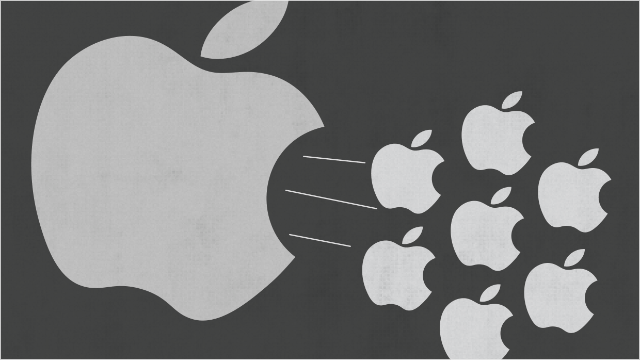Table of Contents
ToggleApple Stock Split, Apple Inc. (AAPL) is one of the most influential and closely watched stocks in the market. Investors and analysts keep a keen eye on its movements, including stock splits. But what exactly is a stock split, and why does Apple do it? In this article, we will dive deep into the concept of stock splits, Apple’s history of splits, and what it means for investors.
What Is a Stock Split?
Apple Stock Split, A stock split occurs when a company increases the number of its outstanding shares by issuing more shares to existing shareholders. The company adjusts the share price proportionally, so the total value of the investment remains the same.
For example, in a 2-for-1 stock split, an investor holding one share at $200 would now own two shares at $100 each. The total value of their holding remains $200. Stock splits do not affect a company’s market capitalization but make shares more affordable to a broader range of investors.
Why Do Companies Split Their Stock?
Improved Accessibility: A high share price can be a barrier for retail investors. Splitting the stock makes it more accessible to smaller investors.
Increased Liquidity: More outstanding shares mean increased trading volume, which can improve liquidity and reduce bid-ask spreads.
Psychological Impact: Lower-priced shares can appear more attractive, encouraging new investors to buy in.
Index Considerations: Some indices, like the Dow Jones Industrial Average, are price-weighted, meaning stock splits can impact their weighting.
Now that we understand why companies split their stock, let’s take a closer look at Apple’s history of stock splits.
Apple Stock Split History
Apple Stock Split, Apple has had multiple stock splits throughout its history, demonstrating how the company has consistently grown and adapted to market conditions.
Apple’s Notable Stock Splits
Apple has split its stock five times since going public in 1980. Here’s a breakdown of those splits:
- June 16, 1987 – 2-for-1 Split
- June 21, 2000 – 2-for-1 Split
- February 28, 2005 – 2-for-1 Split
- June 9, 2014 – 7-for-1 Split
- August 31, 2020 – 4-for-1 Split
Each of these splits followed periods of substantial stock price growth. Investors who held Apple stock over the long term saw their shares multiply while the company’s valuation continued to rise.
The Most Recent Apple Stock Split: August 2020
Apple Stock Split, Apple’s latest stock split occurred on August 31, 2020, when it executed a 4-for-1 split. This meant that shareholders received four shares for every one they previously owned, and the share price was adjusted accordingly.
Why did Apple do this?
- The stock had risen significantly, making it expensive for smaller investors.
- It increased accessibility, aligning with Apple’s philosophy of making its stock more attractive to a wider audience.
- It helped maintain a balanced stock price compared to other tech giants.
How a Stock Split Affects Investors
Stock splits can have a variety of effects on both current and prospective investors.
Short-Term Effects
Increased Trading Activity: A stock split often leads to a surge in trading volume due to increased accessibility and media attention.
Stock Price Volatility: In the short term, the stock may experience heightened volatility as traders react to the split.
Psychological Boost: Retail investors may view the split as a buying opportunity, pushing demand higher.
Long-Term Effects
- No Fundamental Change: A stock split does not affect the company’s intrinsic value, earnings, or financial health.
- Potential for Future Growth: Historically, Apple stock has continued to appreciate post-split, benefiting long-term investors.
- Improved Market Perception: A more affordable share price often brings in new investors, which can support price growth over time.
Should You Buy Apple Stock After a Split?
Apple Stock Split, A stock split, by itself, is neither a buy nor a sell signal. However, if you’re considering investing in Apple, here are some key factors to evaluate:
Apple’s Financial Performance
Apple has consistently reported strong revenue and profit growth, driven by iPhone sales, services, and emerging product categories.
Innovation and Product Pipeline
Apple continues to innovate with new devices, software, and services, keeping its business strong.
Market Position and Competitive Edge
As one of the most valuable companies in the world, Apple has a dominant position in consumer electronics and software ecosystems.
Long-Term Investment Outlook
If you believe in Apple’s continued growth, a stock split offers an opportunity to buy at a lower per-share price and hold for long-term gains.
Conclusion
Apple Stock Split have historically been a sign of the company’s strong growth and confidence in its future. While a split does not change the underlying fundamentals of the business, it does make the stock more accessible to a broader range of investors.
Apple Stock Split, For long-term investors, Apple remains a compelling choice, thanks to its innovation, strong financials, and global brand dominance. If you’re considering investing in Apple post-split, be sure to evaluate the company’s financial health and market prospects before making a decision.















Your online platform captivates me from start to finish. Reading your posts is an absolute pleasure.
I greatly appreciate your talent to convey complex concepts in a comprehensible manner. Keep up the good work!
This site is always a great source of information and inspiration. Thanks for sharing your thoughts and ideas.